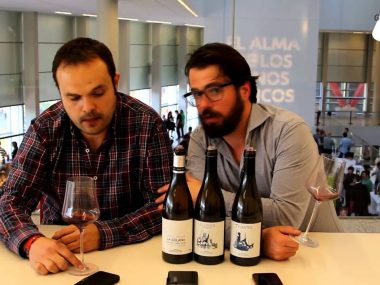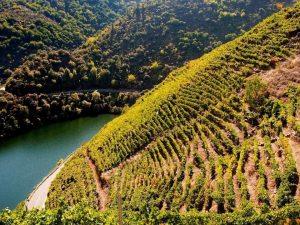The Canary Islands cover an area of some 7,493 square kilometres, and of this territory, some 6,757 hectares are dedicated to the cultivation of different grape varieties that define what the Canary Islands taste like.
This is a privileged area on the planet, where there are unique grape varieties that are more than 500 years old, in addition to the fact that the climate and soil conditions in the area are very particular, benefiting the vineyards.
Currently in the Canary Islands, there are about ten Denominations of Origin (D.O.) of wines, five of which are in Tenerife, such as Abona, La Orotava, Tacoronte-Acentejo, Valle de Güímar and Ycoden-Daute-Isora; while the others have the title of each island, one is Gran Canaria, the other La Gomera, El Hierro, La Palma and Lanzarote.
History of wines in the Canary Islands
According to historians, it was the European explorers, conquerors and settlers who, on arriving on the island in the 15th century, together with the monks, brought the first varieties of grapes cultivated on the island.
The 16th century is known as the golden age of Canary Island wine. At this time, its Malvasia wine achieved such recognition that it was praised by the writer William Shakespeare, as well as by Walter Scott, among other personalities of the time. For some 300 years, the Canary Islands’ main source of income was the export of wine to the rest of Europe, Africa and America.
Unfortunately, in the 17th century, specifically in 1663, England replaced Canary Island wines with Portuguese wines from Oporto and Madeira, establishing the Staple Act and putting an end to the supply of Canary Island wines to the English colonies.
However, this was reversed and nowadays the wines produced in this archipelago are recognised as unique worldwide, and occupy the top positions in different rankings.
Privileged vineyards
When the phylloxera plague affected vineyards worldwide, the Canary Islands became the only territory in Spain, and one of the few in the world, that was not affected by this insect.
This is why in this region it has been possible to maintain a high level of purity of cultivation, with ungrafted vines and without rootstock; this means that the vines are planted directly and grown on their roots, which gives each grape unique properties because they can take advantage of the minerals in the soil very well.
In addition, grape varieties that have become extinct elsewhere are preserved in this area. There are around one hundred catalogued grapes. Among these varieties are Listán Blanco, Listán Negro, Gual, Malvasía Aromática, Albillo Criollo, Vijariego, Negramoll, Verdelló, Castellana Negra, Baboso Negro, Mamajuelo, Verijidego Negro and Verajídiego Blanco, among others.
Orotava Valley
This wine-growing area is located on the island of Tenerife, which belongs to the Canary Islands and covers an area of 2,034 square kilometres. This valley is located in the north-western part of the island of Tenerife, bounded by the municipalities of La Orotava, Los Realejos and Puerto de la Cruz. It was awarded Designation of Origin status in 1995.
In this area, there are some 50 wine-producing bodegas, which are managed and worked by almost a thousand winegrowers and are spread over some 400 hectares. Approximately 20 grape varieties are grown here, the most common being Malvasia, Moscatel, Tintilla, Listán Negro and Blanco, Syrah, Ruby Cabernet, the native varieties Gual and Vijariego, among others.
The best conditions for the best wines
All the islands of this archipelago are dominated by volcanic soils of quite fertile origin in different stages of evolution, which provide the vineyards with a large amount of minerals. They are soils of volcanic sand and clay, permeable, rich in nutrients and with a slightly acid pH. The vineyards are located between 400 and 800 metres above sea level.
On the other hand, despite being so close to the African desert, there is an important variety of microclimates. The climate in the Orotava Valley is Atlantic and is influenced by the humidity-laden trade winds and the cold Canary current. The temperature is around 22°C, and there are no major variations in temperature. Average annual rainfall is around 300 mm, which means that the average annual rainfall in the area is low.
These conditions favour the early ripening of the grapes and reduce the risk of crop loss due to frost, which is frequent in different areas of the European continent.
Traditional viticulture
Due to the difficulty of the terrain due to its orography and other factors, traditional agriculture is practised in this area, without mechanisation. In addition, a traditional method is preserved, which is a braid made from the vine shoots, and is known as the traditional multiple cordon conduction system.
This is forced work that requires pruning at harvest time and manual braiding, but which allows a large area of the plant to receive greater exposure to the sun.
It is the Control Board, together with the wineries, who guarantee the quality of the wines. The maximum authorised production is 10,000 kg/Ha.
Two unique wines are produced in this area, Malvasía and Vidueño, which have been exported all over Europe and America.
Suertes del Marqués
The Suertes del Marqués winery was founded in 2006 by Francisco Javier García Núñez and his sons, with the aim of producing wines in the traditional way, which are currently recognised as some of the best wines of the Canary Islands.
This winery is made up of 21 plots, distributed over 11 hectares located in La Orotava. Their wines have obtained scores of over 90 points, and have been recognised nationally and internationally.
If you are wondering: what do the Canary Islands taste like? Then you should know the main wines of the Bodega Suertes del Marqués, located in the Orotava Valley, as they are considered by experts not only some of the best in the area but also in the country, and even in the world, which express quite accurately the terrori of the area.
Suertes del Marqués Cool
This is a light red wine made from the Listán Negra grape variety, which adapts very well to volcanic soils such as those of the Canary Islands. This grape is cultivated in a traditional way, avoiding the use of chemicals and herbicides. The braided cordon method is used.
Alcoholic fermentation takes place with indigenous yeasts and it is aged for a year in concrete tanks, and finally bottled without adding sulphites.
The result is a juicy red wine with a red fruit aroma, which feels fresh, aromatic and easy to drink, ideal for romantic dinners with red meat or poultry.
Suertes del Marqués Malvasía Rosé
This is a rosé wine made from old vines of Malvasía Rosada grapes that are harvested by hand. For the alcoholic fermentation, the whole bunches are added in an open plastic vat, with stems and it is produced spontaneously with indigenous yeasts.
It is then matured in old French oak barrels. Finally, the wine is bottled unfiltered.
The result is a natural wine, with a taste and aroma of ripe fruit and balsamic touches. It is a medium-bodied wine and its acidity is quite balanced, making it perfect to accompany different types of fish.
Suertes del Marqués Sortevera White Wine
This white wine is made from various grape varieties, such as Listán Blanco, Vijariego Blanco, among others, which are harvested by hand. A quarter of the total grapes are macerated with their skins for a week, then fermented with indigenous yeasts in French oak barrels and aged on its lees for almost a year.
This organic wine has a citrus fruit flavour, as well as some salty flavour. It is a fresh wine with an acid touch, perfect for romantic dinners.
And you, which wine do you dare to try, we assure you that you will love any of them!






